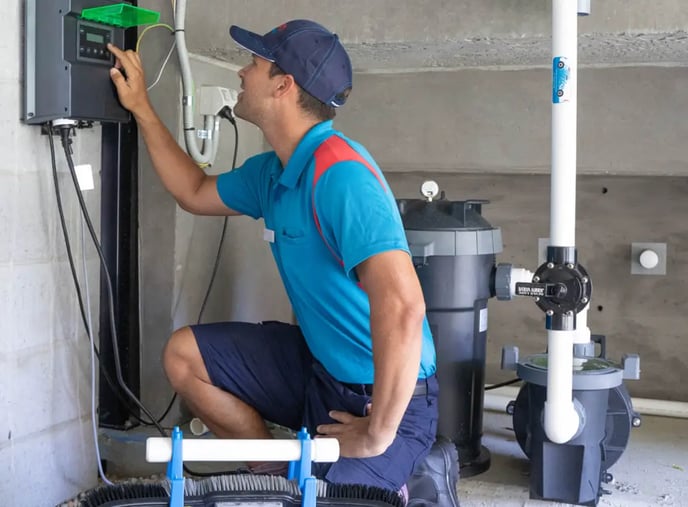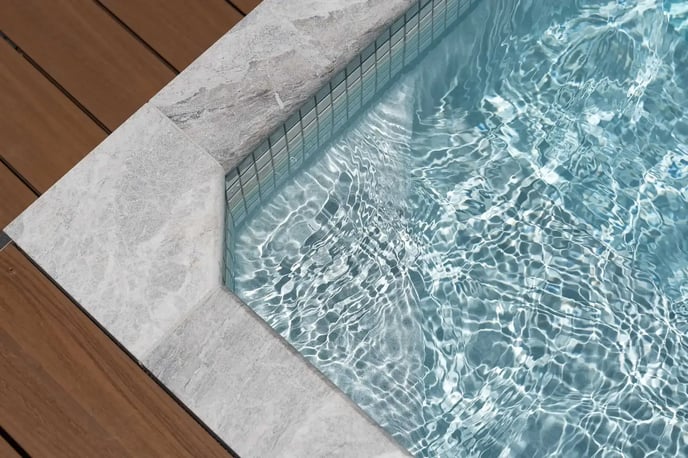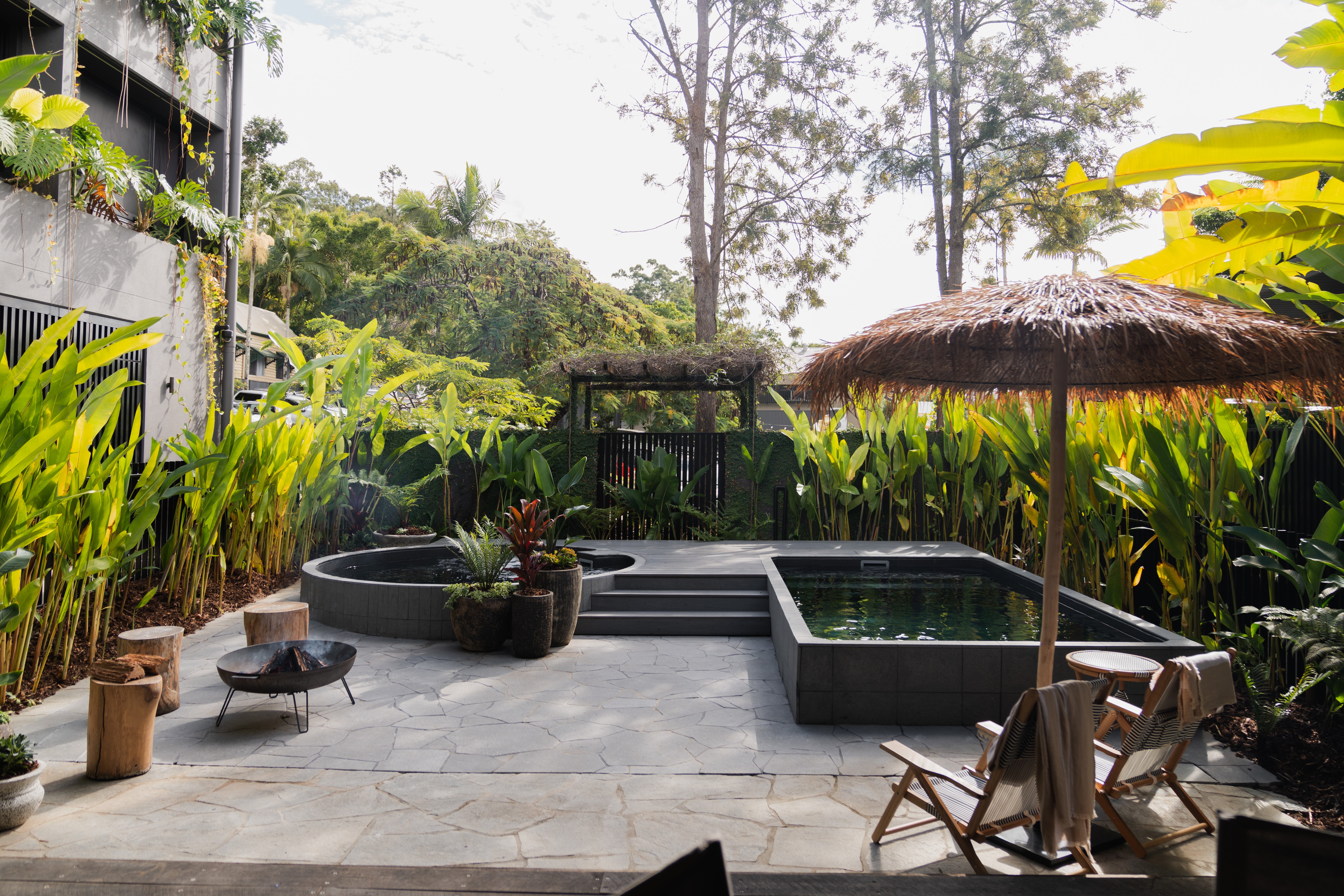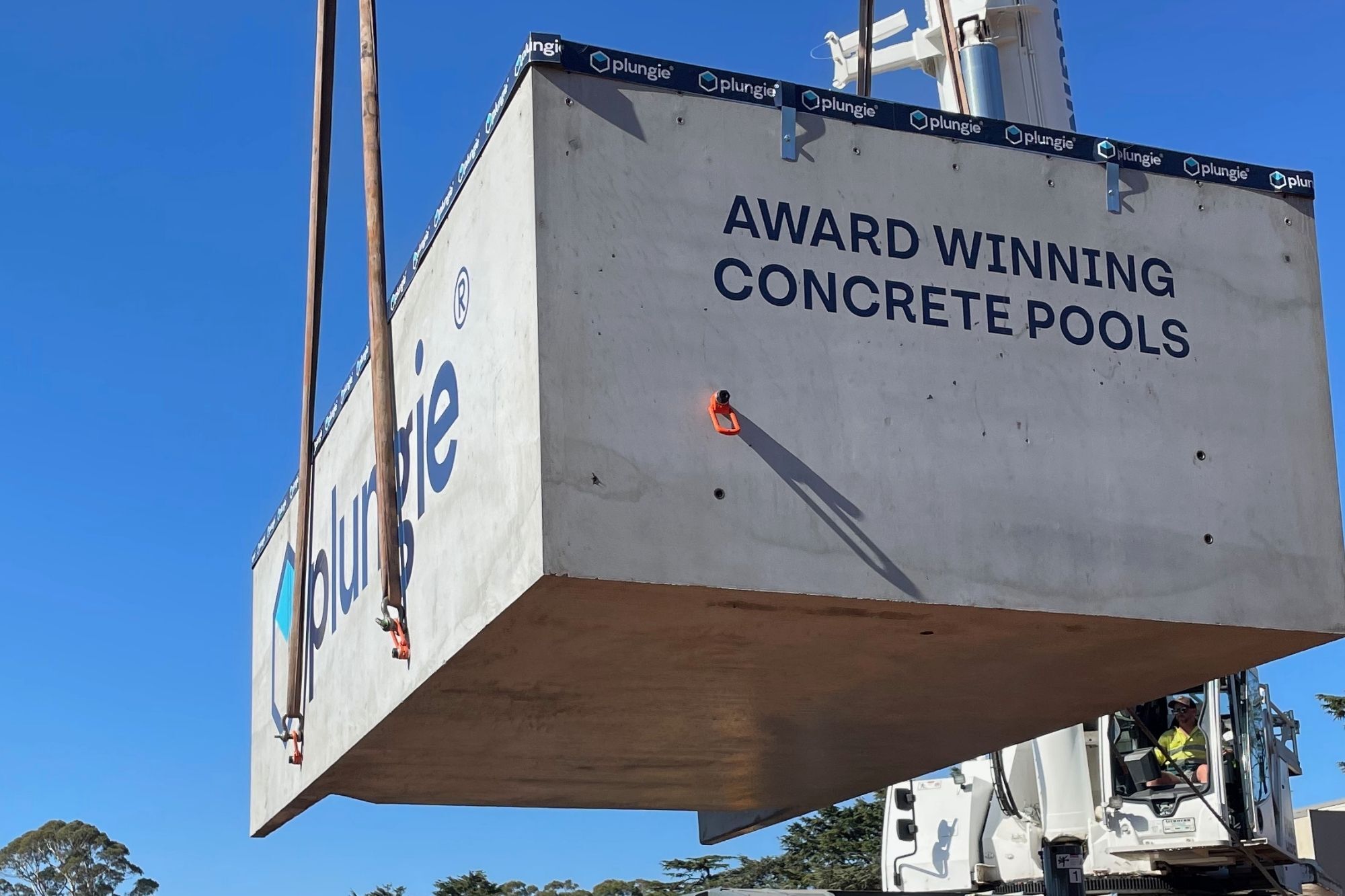Winter is here and after months of sunbathing by the pool, it’s time to cozy up inside with a cup of cocoa. Before you go into hibernation, it’s important to close your pool for winter to avoid damage over the cooler months. Here are four steps for winterizing your pool so you can enjoy the holiday season peacefully, knowing your pool is protected.
Step 1. Clean The Pool And Filter
The first step of winterizing your pool is to clear out pool toys and debris and do a deep clean. You’ll need to brush and vacuum the pool walls to remove algae buildup on the interior coating that could contaminate your pool water if left unattended over winter.
Our ecoFinish interior coating is resistant to stains and algae buildup, so pool cleaning is simple with a Plungie. If you want to save time and energy on this step, we recommend investing in a robotic pool cleaner.
How To Clean A Cartridge Pool Filter
Our standard equipment package includes a cartridge filter, which can be easily cleaned before closing your pool. Before you start, turn off your pool pump to ensure it doesn’t accidentally turn on during the process.
Next, remove the cartridge and hose off the dirt and debris. Finish by soaking it in a mixture of water and filter cleaner to remove grease and other contaminants.
Step 2. Test And Balance Your Pool Water
Balancing your pool chemicals is key to keeping bacteria at bay over winter. The most important chemical levels to test are chlorine, pH, alkalinity, and calcium hardness. You can pick up pool water test kits at most reliable pool supply stores and hardware stores. Once you’ve tested your pool water, adjust your chemicals accordingly so they can continue killing viruses and bacteria.
Step 3. Shock Your Pool
Shocking your pool is a great preventative measure to take before closing your pool for winter. Come summertime, it will also make opening the pool much easier. After all, no one wants to lift the pool cover and find a pond where their pool used to be!
This process involves drastically increasing the level of free chlorine, or the chlorine available to kill contaminants in your pool water. Shock treatments are available for purchase at pool supply stores and most hardware stores.
Controlling Algae In A Pool
Algaecide should always be added to a pool after a shock treatment to prevent algae growth. It’s best to wait until chlorine levels have returned to normal (roughly 24 hours) to do so; otherwise, the free chlorine will destroy the algaecide along with the other contaminants.
Algae love phosphates as they’re one of their food sources. Adding phosphate remover will help starve the algae and go the extra mile to prevent blooms over winter.
Step 4. Cover Your Pool For Winter
The final step in winterizing your pool is to cover it up. This stops leaves and other debris from littering the pool, so you don’t have to brave the cold to remove them.
There are several types of swimming pool covers to choose from, and it’s important to consider how strong your cover will need to be before investing. If you live in rural America, for example, you may need a stronger pool cover to protect animals from falling into the pool.
How Often Should I Check My Pool Water?
After you close the pool, it’s best practice to check the water once a fortnight. This will ensure your water chemicals stay balanced and give you a chance to stop any algae growth in its tracks.
With the holidays fast approaching, it’s time to go forth and winterize your pool. If you require any support in relation to your Plungie products, our friendly team is here to help — simply fill out our product support inquiry.
If your property is missing a pool, download a Plungie quote and information pack to get the process started today. We’ll make sure you don’t spend another summer without the sounds of splashes, laughter, and family fun!





